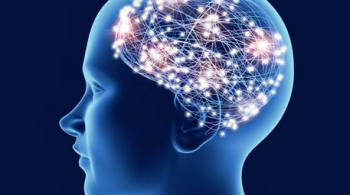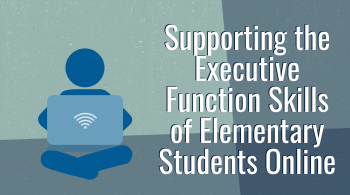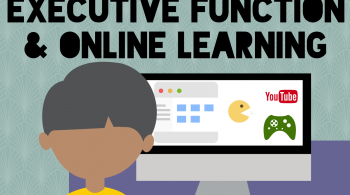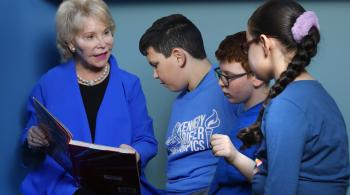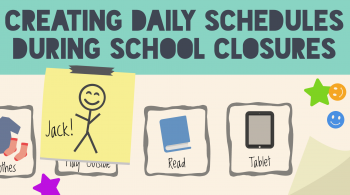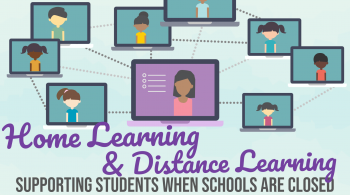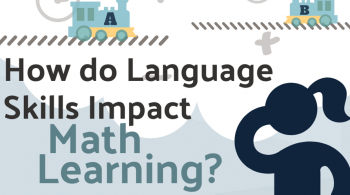April 17, 2016
As we noted in our blog post about evidence-based practices for students with autism spectrum disorder, applied behavior analysis (ABA) has been repeatedly shown to improve outcomes for students with ASD. ABA practitioners are acutely aware that many myths surround the use of ABA in the school setting. These myths can sometimes prevent students from receiving a highly beneficial treatment for behaviors that impede their ability to function independently within an inclusive setting.
We asked public school teachers, as well as faculty and staff in the Neurobehavioral Unit at Kennedy Krieger Institute, to address some of the most common myths surrounding ABA.
Myth: ABA is an experimental treatment and is not scientifically demonstrated to be effective.
Fact: ABA is an evidence-based practice that has a substantial amount of peer-reviewed research demonstrating its effectiveness for increasing appropriate behaviors and decreasing problem behavior. In fact, there are several peer-reviewed journals devoted to publishing on scientific practices within the field of ABA.
For those who are unfamiliar with the peer review process, it involves having a panel of topic experts (scholars and practitioners) who evaluate the methods, data, and relevance of outlined procedures to determine if the findings are of importance and thus should be disseminated.
When reading about ABA, it is important to be critical and ensure that the author has cited studies and evidence from reputable peer-reviewed sources.
Myth: ABA just uses food and toys to bribe kids into doing things, allowing kids to get hooked on edible rewards.
Fact: Practice within the field of ABA is driven by the concept of reinforcement. Reinforcement is when a stimulus is paired with a desired behavior. Practitioners use reinforcement to alter a person’s behavior through contingency planning.
For example, a student who is working on remembering to raise their hand before speaking in class might receive verbal praise for doing so during a class discussion. The teacher has already established that the student likes and is motivated by verbal praise, therefore the pairing of the praise with the desired behavior will work to make the behavior more likely to occur in the future.
Sometimes students need more concrete or physical reinforcement than verbal praise. In these instances, tangible reinforcement might be used. Students might also access reinforcement by engaging in a preferred activity for a specific length of time.
Regardless of the type of reinforcement, a fade plan should be in place to help students maintain pro-social behaviors without requiring large amounts of contrived reinforcement.
Myth: ABA is focused on punishment.
Fact: Often times, the term punishment is misunderstood – it refers to adding or removing a stimulus with the goal of decreasing the future frequency of behavior. For example, a student may lose access to a preferred item for a limited and specific length of time after engaging in a behavior that has been targeted to be decreased.
Punishment is one potential treatment component that may be used in an ABA program, but only when the behavior of concern warrants use and other less intrusive measures have failed.
If punishment is used, it should adhere to the ethical guidelines set forth for all behavior analysts to follow.
View the ethical guidelines for BCBAs (4.08 and 4.09) .
Myth: ABA is a specialized therapy just for people with autism and is not useful for people with other diagnoses.
Fact: ABA therapies have been shown to improve behavior for students with ASD; however, they have also been used to help decrease problem behavior for students with a variety of backgrounds (Simonsen, Fairbanks, Briesch, Myers, & Sugai, 2008).
This includes classroom management (e.g. group contingencies) and direct intervention strategies for typically-developing students (Simonsen et al., 2008), students with intellectual disabilities (Horner et al., 2005), and students with emotional and/or behavioral disabilities (Wehby et al., 2003).
Many believe this particular inaccurate view of ABA was perpetuated by the findings of Ivar Lovaas, a pioneer who worked to help improve the lives of children with autism (Lovaas, 1987).
References:
- Simonsen, B., Fairmbanks, S., Briesch, A., Myers, D., & Sugai, G. (2008). Evidence-based practices in classroom management: Considerations for research to practice. Education and Treatment of Children, 31(3), 351-380.
- Horner, R. H., Carr, E. G., Halle, J., McGee, G., Odom, S., & Wolery, M. (2005). The use of single-subject research to identify evidence-based practice in special education. Exceptional Children, 71(2), 165-179. doi:10.1177/001440290507100203
- Wehby, J. H., Lane, K. L., & Falk, K. B. (2003). Academic instruction for students with emotional and behavioral disorders. Journal of Emotional and Behavioral Disorders, 11(4), 194-197.
- Lovaas, O. I. (1987). Behavioral treatment and normal educational and intellectual functioning in young autistic children. Journal of Consulting and Clinical Psychology, 55(1), 3-9. doi:10.1037/0022-006X.55.1.3






